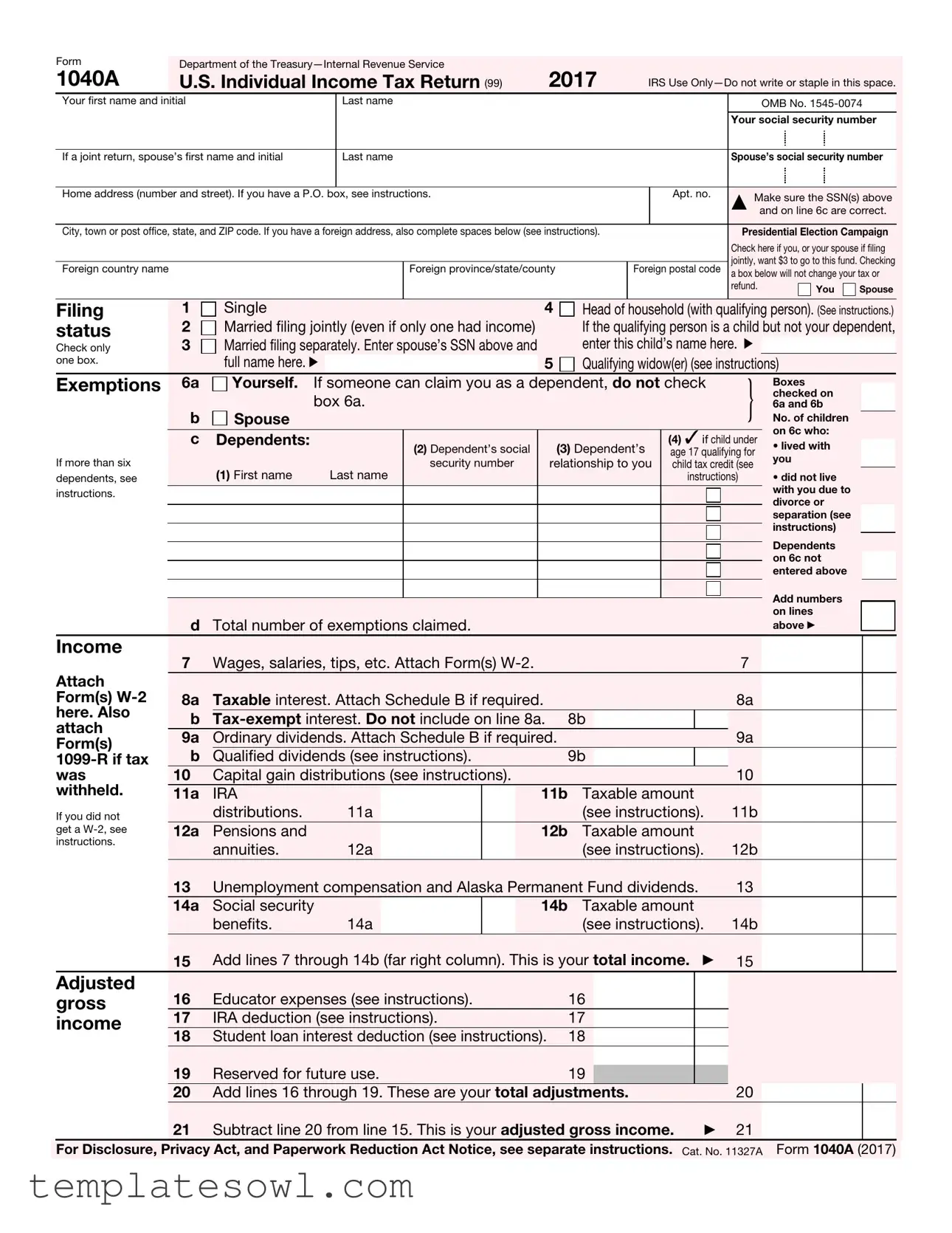What is the IRS Form 1040A?
The IRS Form 1040A is a simplified version of the U.S. Individual Income Tax Return. It allows taxpayers with straightforward tax situations to report their income and claim certain credits and deductions. It is specifically designed for those who do not itemize deductions and have a limited amount of income sources.
Who is eligible to file Form 1040A?
Form 1040A can be filed by individuals with a taxable income below $100,000, those who claim certain credits, and those who can only report income from wages, salaries, and a few other sources. However, it is not suitable for individuals with more complex tax situations or multiple income sources.
What are the main sections of Form 1040A?
The form consists of several key sections: personal information (name, Social Security numbers, and address), income (reporting wages, interest, dividends, and other income), adjustments to income, standard deductions, exemptions, tax credits, and payments. Each section is designed to capture specific financial information to calculate the overall tax obligation.
How do I determine my standard deduction?
The standard deduction amount varies based on filing status and whether the taxpayer is age 65 or older or blind. For the tax year 2017, the amounts were $6,350 for single filers and $12,700 for married couples filing jointly. Review the instructions on the form to identify the appropriate deduction based on individual circumstances.
Can I e-file using Form 1040A?
Yes, Form 1040A can be e-filed using approved tax software or through a tax professional. E-filing can expedite the processing of your tax return and often increases the speed at which refunds are issued.
What should I do if I made a mistake on my Form 1040A?
If you discover an error after submitting your Form 1040A, you can amend your tax return by filing Form 1040X. This will allow you to correct mistakes related to income, deductions, or credits claimed. It’s essential to act promptly to minimize any potential penalties or interest that may accrue as a result of the error.
Where can I find help if I have questions about Form 1040A?
Assistance is available through the IRS website, where detailed instructions and resources are provided. Additionally, taxpayers can contact the IRS directly via phone or seek the help of tax professionals for personalized guidance with Form 1040A.



